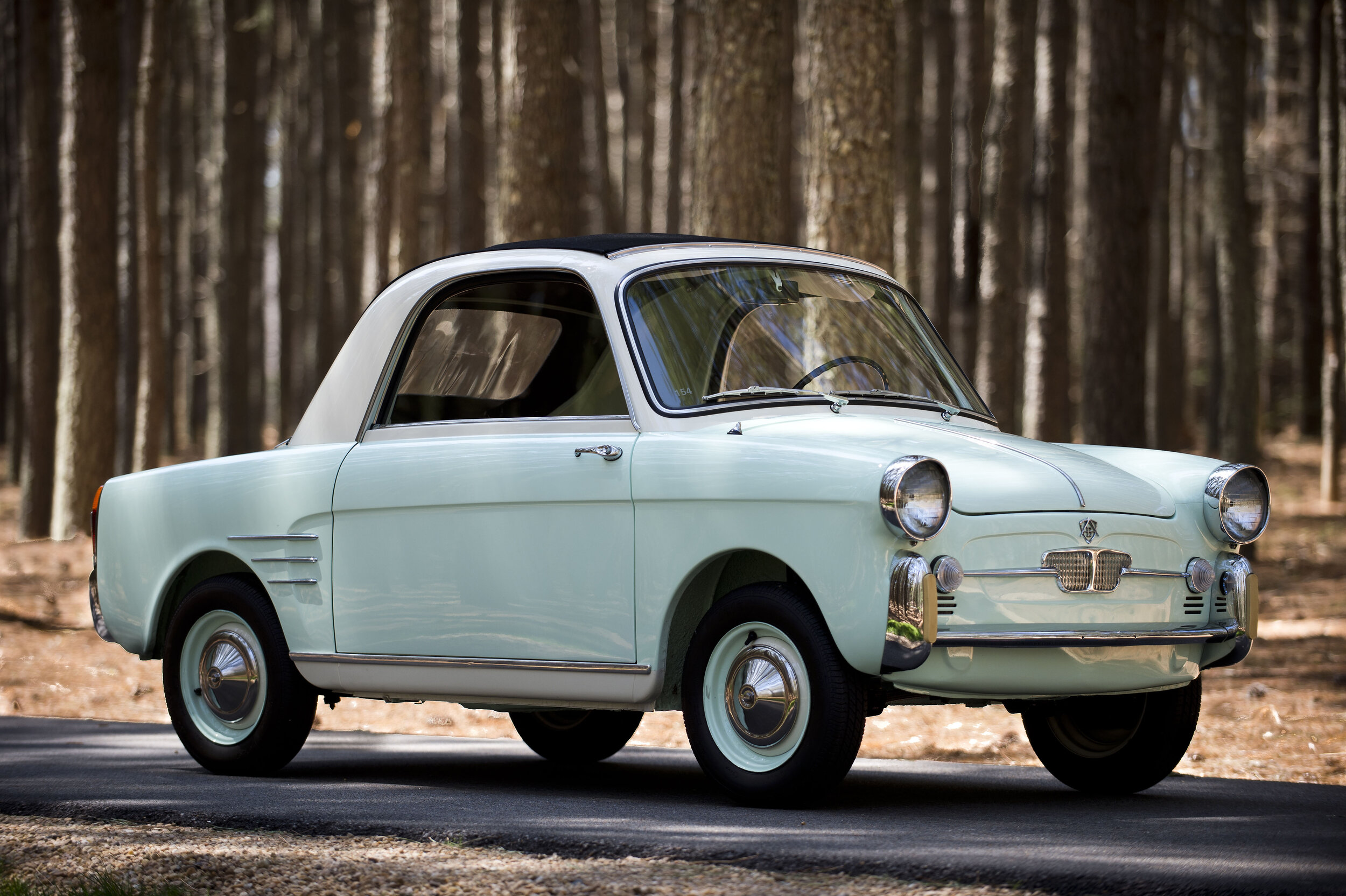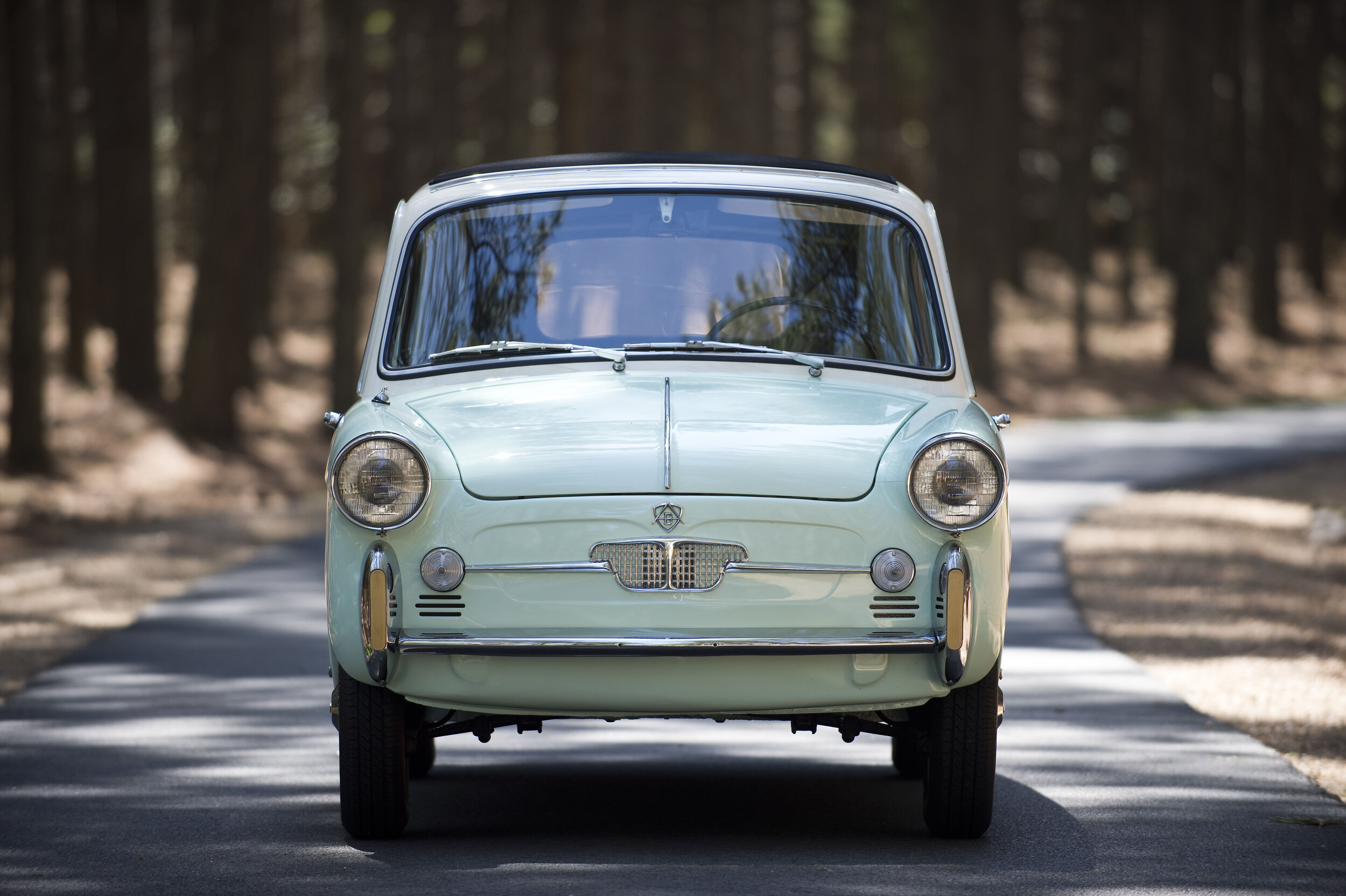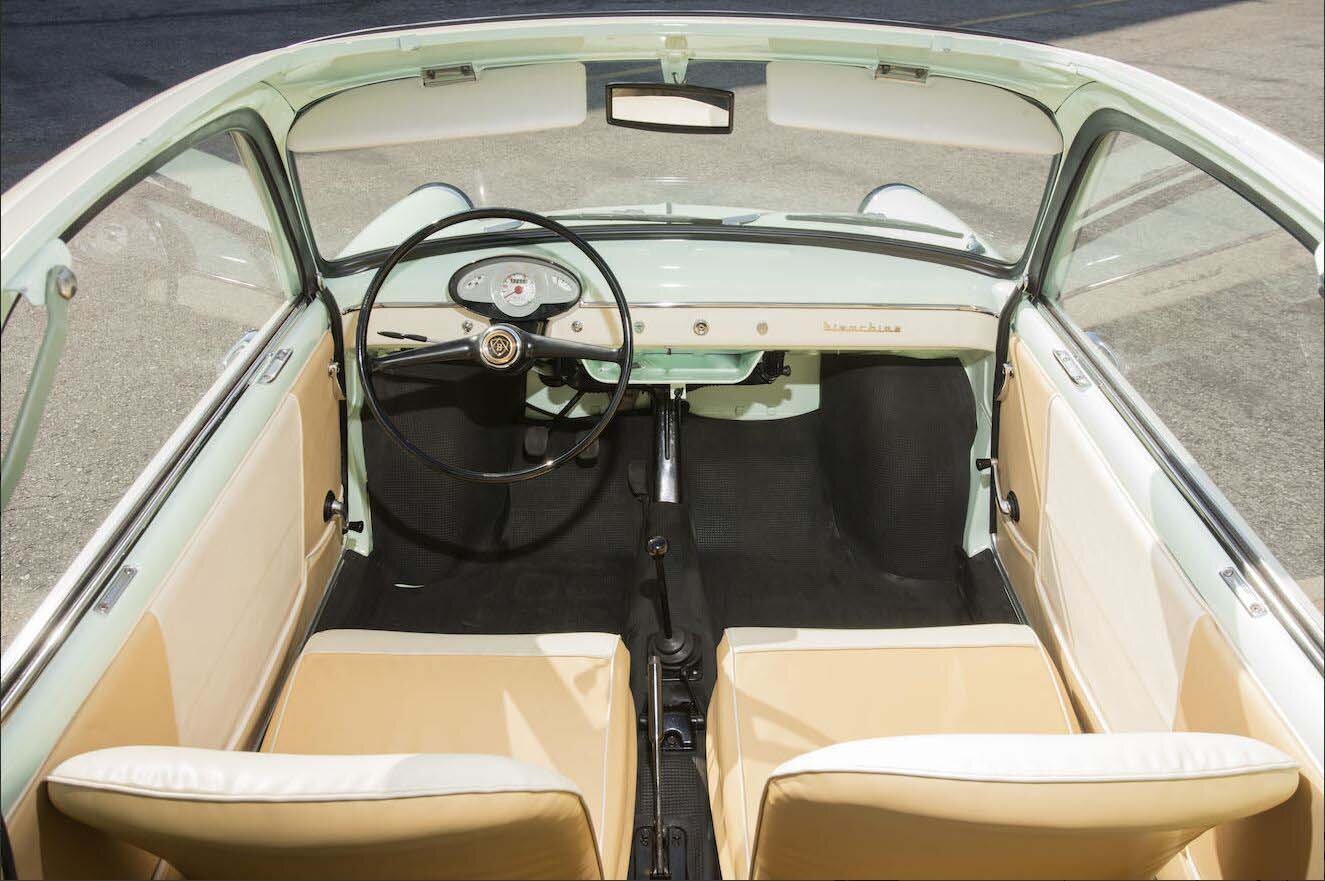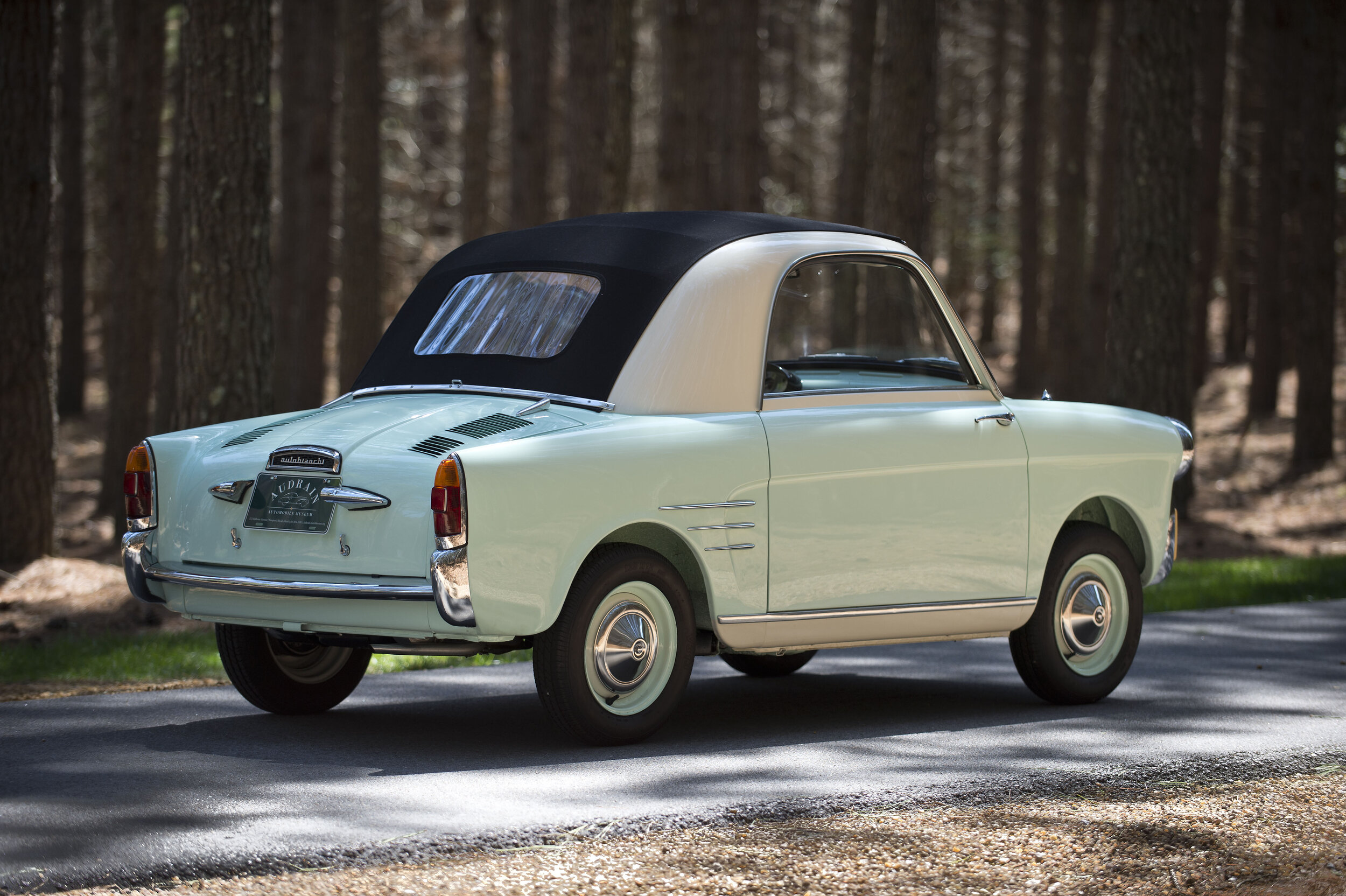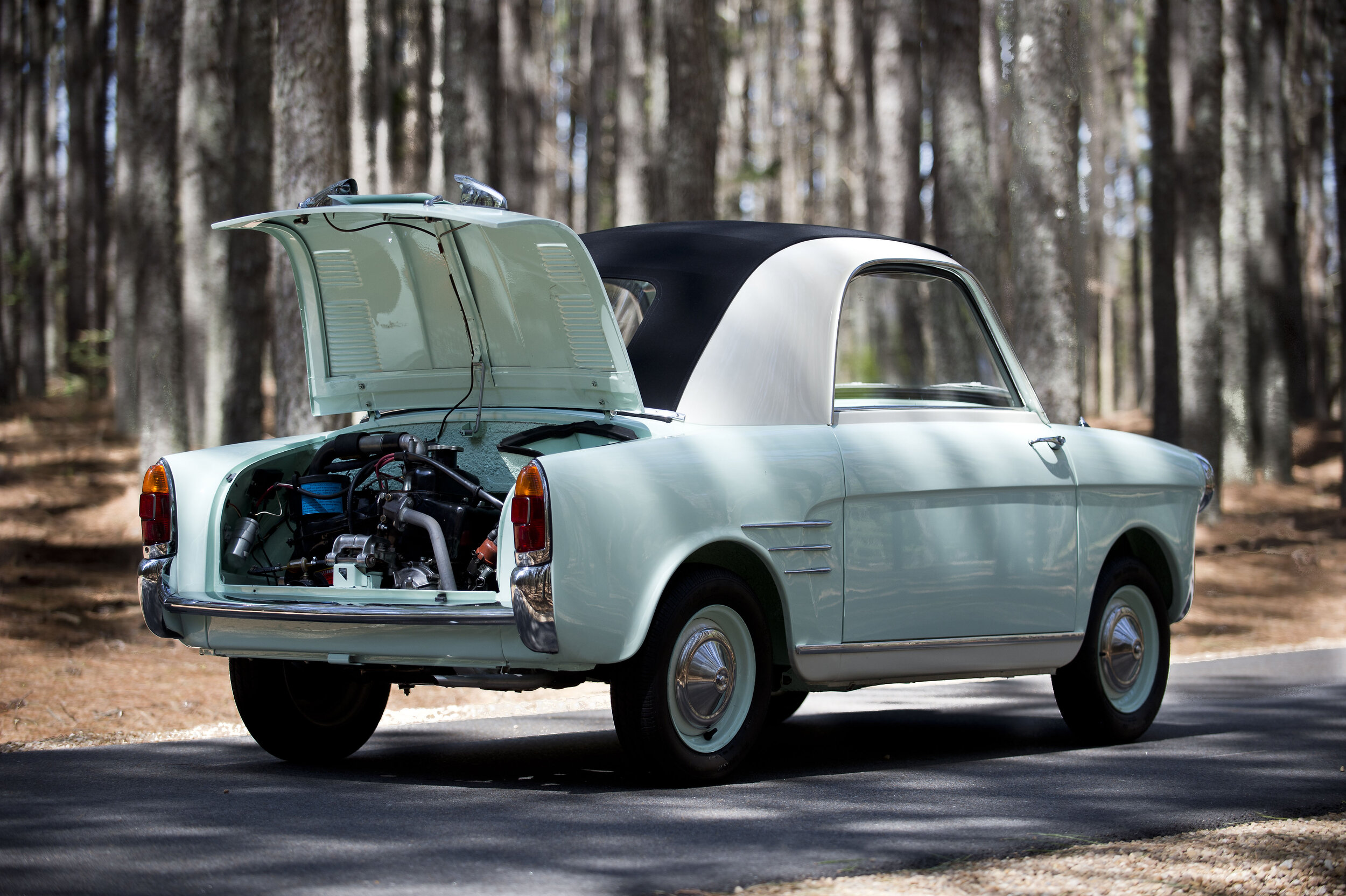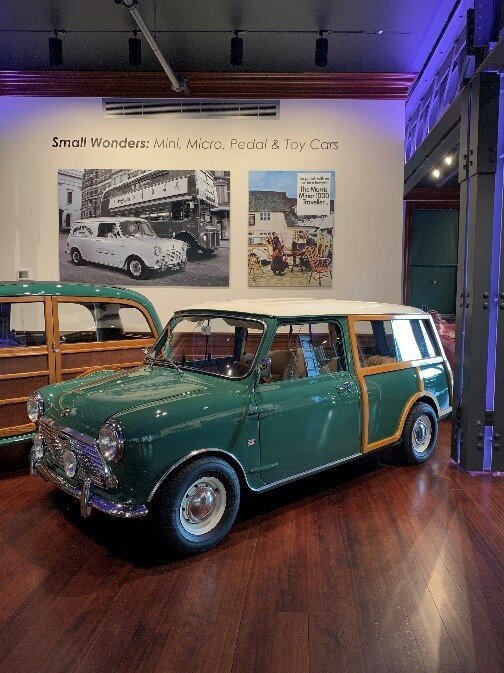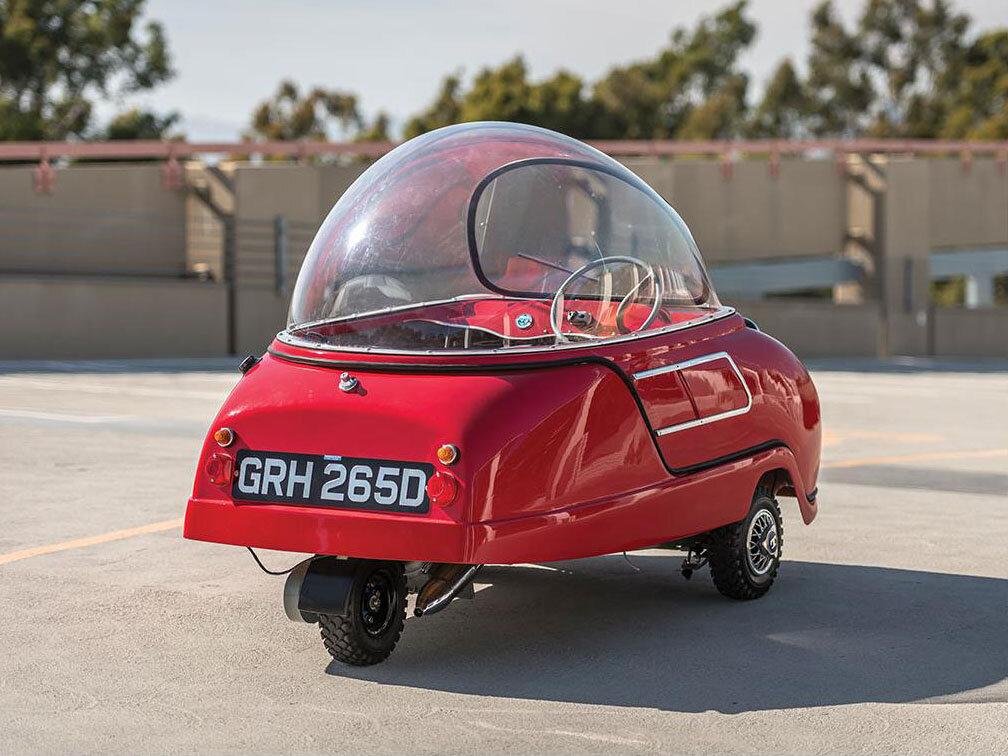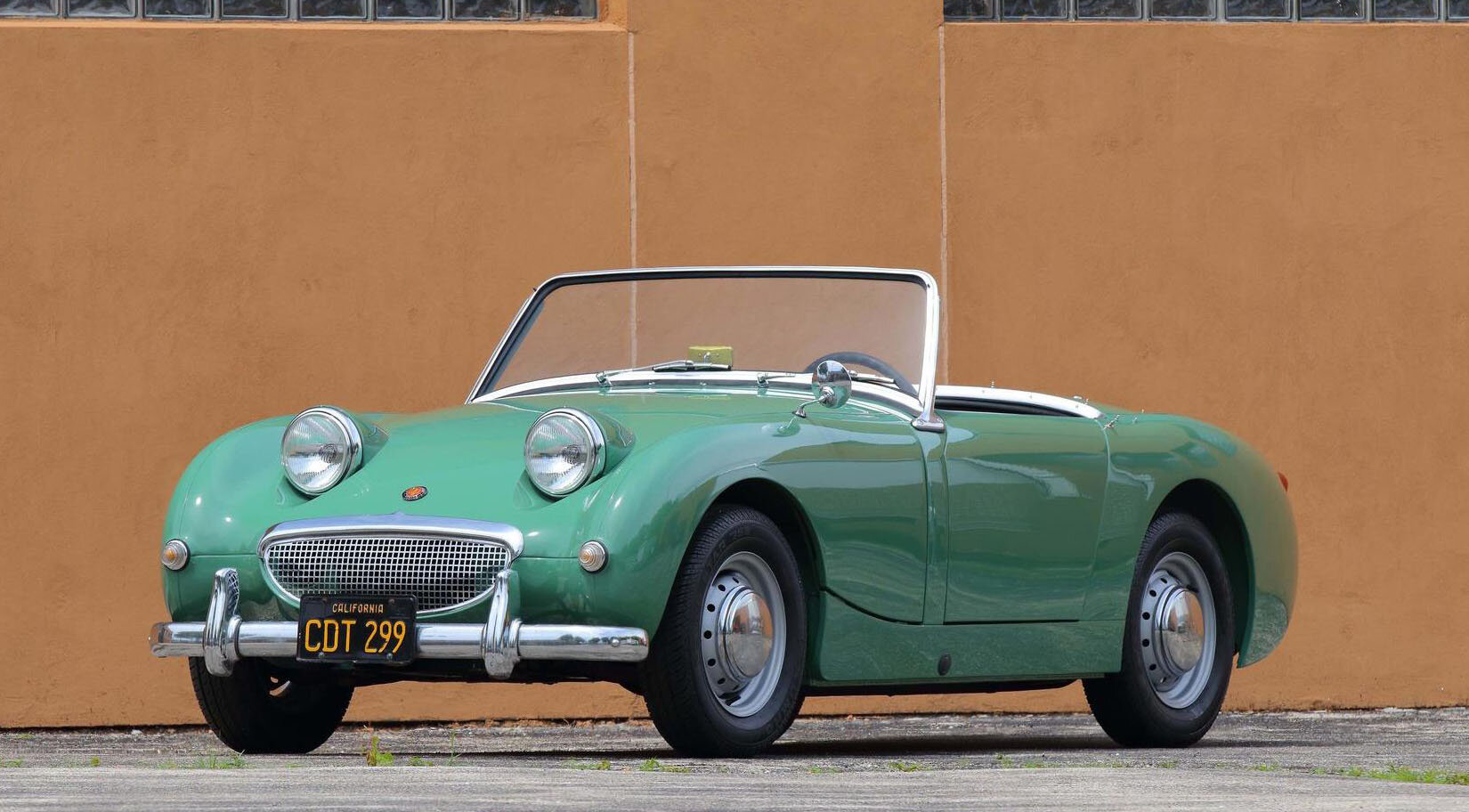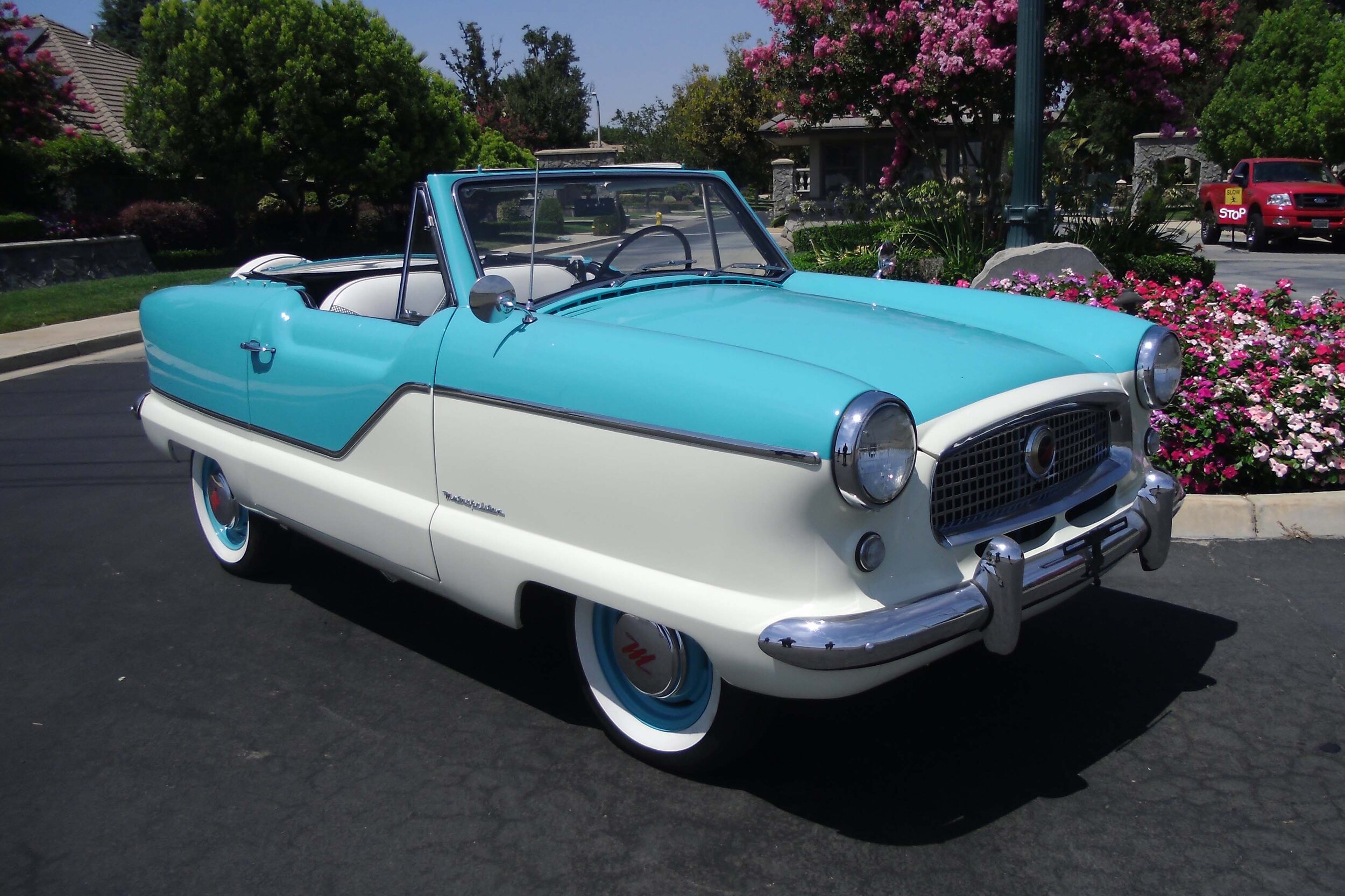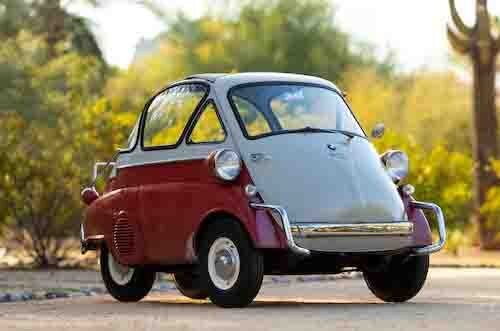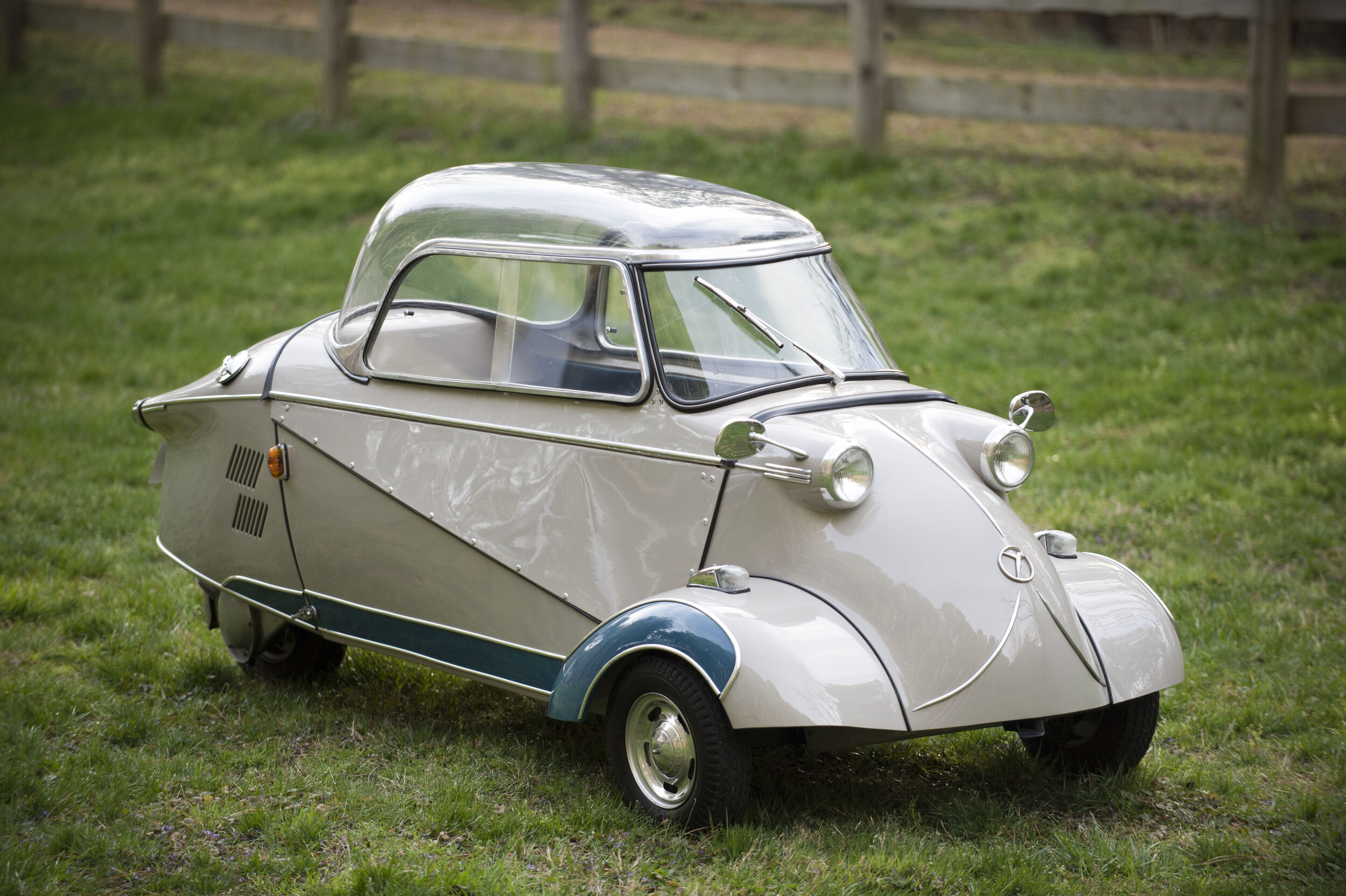1959 Autobianchi Bianchina Trasformabile
Specifications
Configuration: Rear engine, rear-wheel drive
Engine: 479 cc OHV 2-cylinder engine
Horsepower: 17 @ 4,000 RPM
Transmission: 4-speed manual
In 1885, 20-year-old Eduardo Bianchi established a bicycle-making business in Milan, and before long was making motorized three-wheelers and later four-wheelers. In the 1920s, Bianchi was third behind only Fiat and Lancia in Italian car production.
In 1955, Bianchi approached car maker Fiat and tire maker Pirelli about a partnership, and thus the Autobianchi Company was formed. The first product was the Bianchina, which was based on the Fiat 500, but positioned as a more luxurious, ‘second-car’ alternative. The Bianchina was the first car produced by the company, and the name paid tribute to Eduardo Bianchi’s ‘car’ from 1899.
The first body style to roll off the assembly line was the Trasformabile and would remain as the only body-style available until 1960, when the Cabriolet (roadster) was introduced. Other configurations included the Berlina (saloon), Panoramica (station wagon), and Furgoncino (van). The Trasformabile featured a fixed B-pillar and partial roof, as the rest of the opening was covered with a foldable fabric hood.
With their peppy, air cooled, rear-mounted 2-cylinder engines, 4-speed manual gearboxes, 4-wheel independent suspension, and 4-wheel hydraulic drum brakes, Autobianchi Bianchinas are excellent examples of some of the world’s finest micro cars. Mini cars are often viewed as a cheap transportation alternative - the Bianchina was a much different species. Its premium design features and equipment separated the Bianchina from its competitors, as the car was marketed to a completely separate audience.
Autobianchi’s aim was to target upper-middle class families along with affluent women with the changing times in Italy, known as “Il Boom Economico” – the Italian economic miracle of the late 1950’s, which finally helped to lift the country out of the depths of post-War depression. The Bianchina was the perfect car for this period in Italy. It was small enough to easily navigate the wild streets of Rome, though had all the same flair as big American cars of the period.


